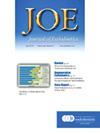牙外伤Evo -人工智能聊天机器人支持牙外伤专业管理的开发。
IF 3.6
2区 医学
Q1 DENTISTRY, ORAL SURGERY & MEDICINE
引用次数: 0
摘要
简介:牙外伤是一个公共卫生问题,需要适当的临床管理,以尽量减少并发症。基于人工智能的技术可以通过提供标准化指导来支持决策。本研究开发并评估了一种人工智能聊天机器人,以帮助专业人员处理牙齿创伤。方法:牙外伤Evo聊天机器人是根据国际牙外伤协会(IADT)的指南开发的,利用基于规则的系统确保建议与已建立的临床方案一致。聊天机器人是用Python实现的,集成了ChatGPT-4 API,并通过Streamlit提供,支持50多种语言的交互。验证是由牙髓学和儿科牙科专家进行的,他们评估了反应的清晰度和一致性。通过涵盖32种创伤类型的384次互动来评估效果,评估建议的准确性和完整性。结果:该聊天机器人推荐临床治疗的准确率达到100%。然而,一些最初的反应并不包括指南中列出的所有治疗方案,特别是在乳牙的牙釉质、牙本质和牙髓暴露骨折的情况下,只有53%的反应是完全的。在对代码进行调整之后,第二轮测试显示出了显著的改进,在大多数情况下达到了100%的完整性。只有建议再植入率达到93%,这表明需要进一步的改进。结论:人工智能聊天机器人在标准化牙外伤管理方面表现优异,通过提供符合国际准则的快速准确响应,证明了其协助专业人员决策的潜力。本文章由计算机程序翻译,如有差异,请以英文原文为准。
Dental Trauma Evo – Development of an Artificial Intelligence-powered Chatbot to Support Professional Management of Dental Trauma
Introduction
Dental trauma is a public health issue that requires proper clinical management to minimize complications. Artificial intelligence-based technologies can support decision-making by providing standardized guidance. This study developed and evaluated an artificial intelligence-powered chatbot to assist professionals in managing dental trauma.
Methods
The Dental Trauma Evo chatbot was developed based on the guidelines of the International Association of Dental Traumatology, utilizing a rule-based system to ensure recommendations aligned with established clinical protocols. The chatbot was implemented in Python, integrated with the ChatGPT-4 API, and made available via Streamlit, enabling interactions in over 50 languages. Validation was conducted by specialists in endodontics and pediatric dentistry, who assessed the clarity and consistency of the responses. Performance was evaluated through 384 interactions covering 32 types of trauma, assessing the accuracy and completeness of the recommendations.
Results
The chatbot achieved 100% accuracy in recommending appropriate clinical management. However, some initial responses did not include all treatment options outlined in the guidelines, particularly in cases of enamel, dentin, and pulp-exposed fractures in primary teeth, where only 53% of responses were complete. After adjustments to the code, the second round of testing showed significant improvements, reaching 100% completeness in most cases. Only the recommendations for the reimplantation of avulsed teeth with an open apex reached 93%, indicating the need for further refinements.
Conclusions
The artificial intelligence-powered chatbot demonstrated high performance in standardizing the management of dental trauma, proving its potential to assist professionals in decision-making by providing quick and precise responses aligned with international guidelines.
求助全文
通过发布文献求助,成功后即可免费获取论文全文。
去求助
来源期刊

Journal of endodontics
医学-牙科与口腔外科
CiteScore
8.80
自引率
9.50%
发文量
224
审稿时长
42 days
期刊介绍:
The Journal of Endodontics, the official journal of the American Association of Endodontists, publishes scientific articles, case reports and comparison studies evaluating materials and methods of pulp conservation and endodontic treatment. Endodontists and general dentists can learn about new concepts in root canal treatment and the latest advances in techniques and instrumentation in the one journal that helps them keep pace with rapid changes in this field.
 求助内容:
求助内容: 应助结果提醒方式:
应助结果提醒方式:


